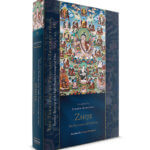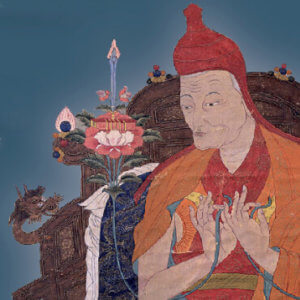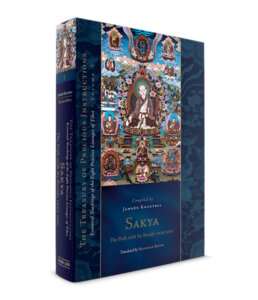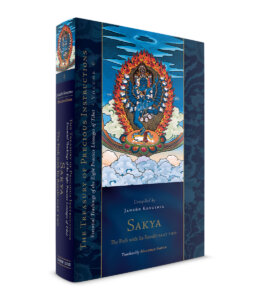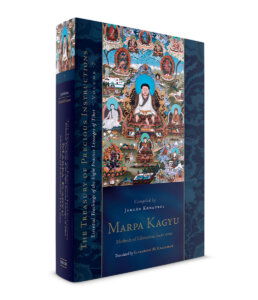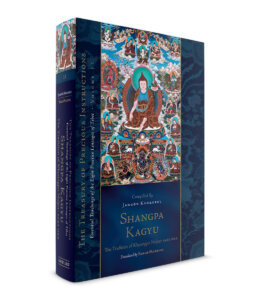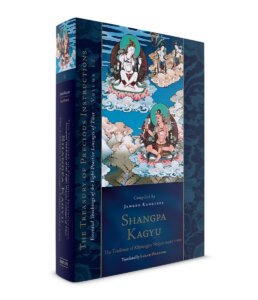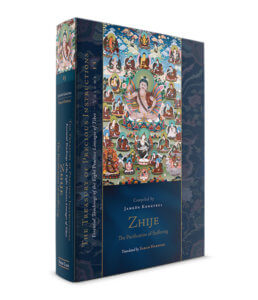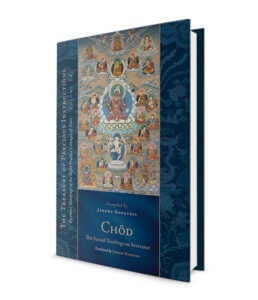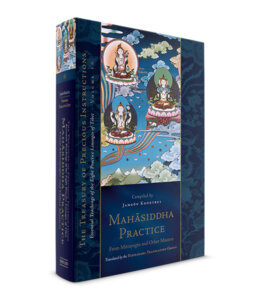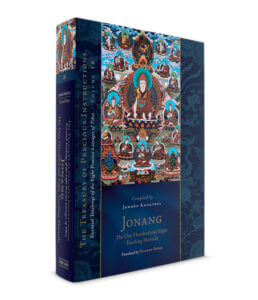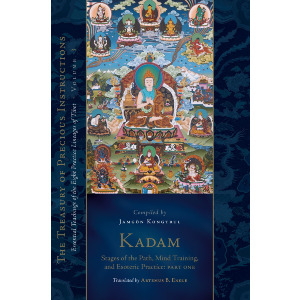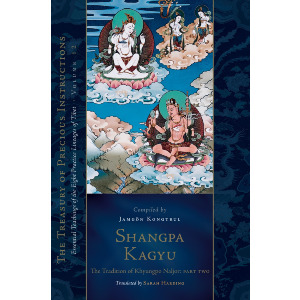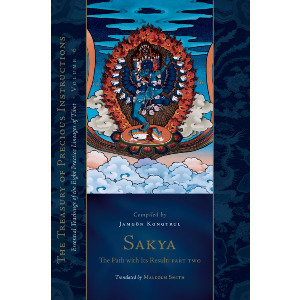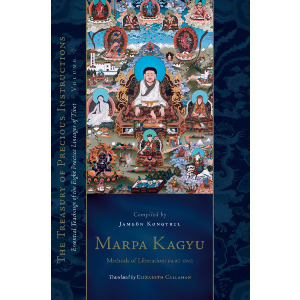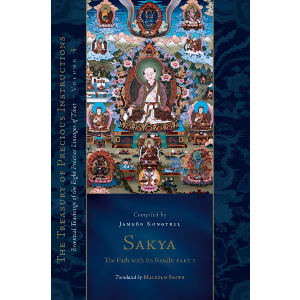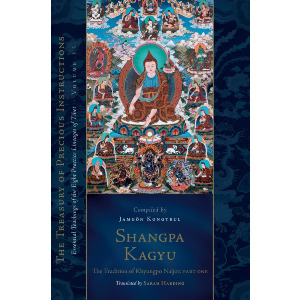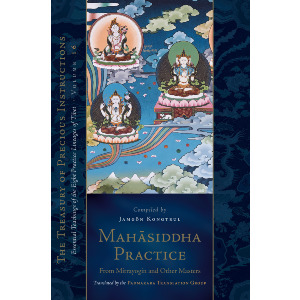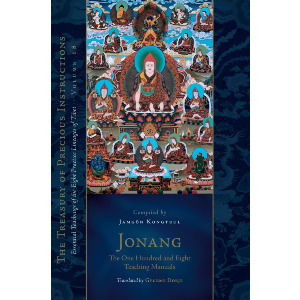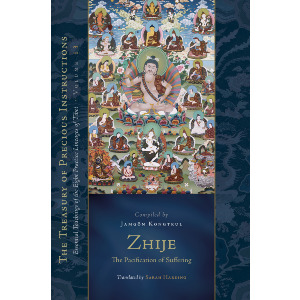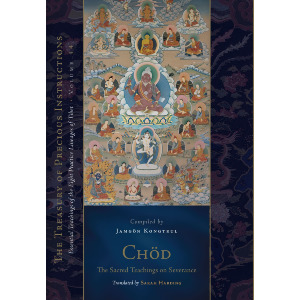Shangpa Kagyu, Volumes 11 & 12
Volumes eleven and twelve contain the teachings of the Shangpa Kagyu school founded by the remarkable Tibetan master Khyungpo Naljor (990–1139), who is reputed to have lived to the age of 150, visited India seven times, and studied with more than 150 masters, including the two dakinis Niguma and Sukhasiddhi. Kongtrul had a special affinity with this tradition, which he felt was in danger of losing its identity as a distinct tradition, owing both to the vicissitudes of the Tibetan religio-political scene and to the fact that many of its teachings had been absorbed into other schools. Kongtrul was very concerned that the Shangpa Kagyu not just survive but thrive as a viable school of spiritual thought and practice, and to this end he made it a major focus in his program for the three-year, three-month retreat center he established at his hermitage of Kunzang Dechen Ösel Ling, near Palpung Monastery, the seat of the Tai Situpas in eastern Tibet. Kongtrul’s dedication to preserving and revivifying the Shangpa Kagyu tradition was carried on by one of his incarnations, Kalu Rinpoche Karma Rangjung Kunkyap Trinle Pal Zangpo (1908–1989), so that the school is currently undergoing something of a renaissance and has gained the support of such eminent figures as the current Tai Situ Rinpoche, Pema Dönyö Nyingje.
Shangpa Kagyu, Volume 11contains works by Niguma, Khyungpo Naljor, Atisha, Virupa, Taranatha, Tekchok Dorje, Losal Tenkyong, and Jamgon Kongtrul.

